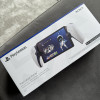Researchers have successfully combined two of natures most powerful adhesive strategies to produce the underwater equivalent of a post-it note!
Writing in Nature, Phil Messersmith from Northwestern University in Illinois describes how he and his team have come up with "Gekel", which consists of an array of silicone nanorods designed to mimic a gecko's foot, coated in a polymer recipe based on the adhesive used by mussels to glue themselves onto rocks and jetties.
Geckos are the lizard equivalent of spidermen. They can run up vertical surfaces and even move across surfaces upside down. The secret to their surface-hugging success is an array of microscopic nano-hairs on their feet. These tiny hairs, each no more than one five thousandth of a millimetre across, are electrically attracted to the surface they are touching, giving the gecko sticking power. But unfortunately geckos come unstuck in the wet, which has thrown a spanner in the biomimetic works of researchers who are trying to copy the gecko's trick for use in robotics and to produce better adhesives. But this problem led Messersmith to wonder whether mussels might be the answer. These shellfish produce proteins containing large amounts of the unusual amino acid DOPA (di-hydroxy-phenylalanine), which sticks tightly to most surfaces. So he produced an artificial version of the mussel glue and smeared it onto the artificial gecko foot. The result was an adhesive that can be attached, detached and reattached at least a thousand times without losing its stickiness, in and out of the water.
Now the team are looking at ways to scale up production of the new material, and they hope one immediate application will be in producing better wound-dressings, and plasters that won't float off in the pool!










Comments
Add a comment